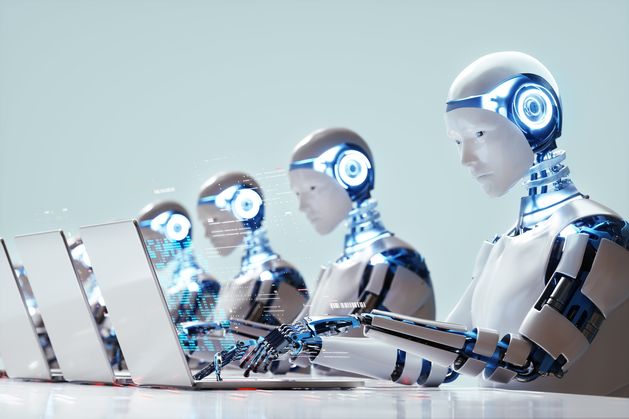Ireland’s high-tech economy faces bigger fallout than some where more traditional industries remain big employers
A total of 63pc of the workforce are exposed to the emerging technology in some way, according to the analysis which used AI data from 2021.
However, 30pc of the labour market hold positions which are potentially at risk of being substituted by the technology.
This includes roles such as IT operations and laboratory technicians, as well as chartered and certified accountants.
The occupational groups which have the highest potential automation risk include administrative and secretarial jobs, as well as sales and customer service positions, both departments reported.
Impacted sectors include finance and insurance, as well as information and communication.
Today’s News in 90 seconds – 11th June 2024
Meanwhile, a third of Irish jobs are positively exposed to the impact of AI, with the technology anticipated to boost productivity in these positions. Jobs which feature in this category include medical practitioners, librarians, psychologists, barristers and judges.
Women are more likely than men to hold roles that are negatively exposed to AI as more women work in administrative or customer service occupations.
Industries such as agriculture and construction are also male dominated, which contributed to the higher exposure of female employees in Ireland. Elementary occupations, such as those in building, transport and manufacturing, have the lowest exposure of all occupational groups to any changes driven by the technology.
The agriculture, forestry and fishing sector was also highlighted as the least exposed to AI.
Younger people – those aged between 15 and 34 – may also work in jobs that are at risk of being automated compared with their older colleagues, according to the analysis.
Ireland is slightly more exposed than the advanced economy average, although the UK is slightly more exposed to the impact of AI than Ireland.
However, the US is slightly less exposed.
Those working in urban areas are more likely to be affected, with around 71pc of those located in Dublin in relatively highly exposed roles.
However, the reports also noted that higher earners stand to benefit most from increased AI adoption due to preliminary analysis that revealed a positive correlation between exposure to the technology and salary.
The reports, which were prepared to assist the Government in defining future policy, also noted that previous waves of “labour-saving technologies” had focused on machines replacing hands at work.
This differs from the potential influence of AI in the workplace, which could replace more highly skilled positions.
The analysis pointed to possible short-term disruption to labour market, while there is also potential for new jobs linked to emerging technologies to replace those under threat.
Other areas under scrutiny include the possible impact of the technology on the Government’s other macroeconomic objectives, including climate goals.
The computing power required to run AI platforms is extremely high, with data centres in Ireland already facing criticism for the amount of electricity they consume.
The reports also pointed to a potential impact on tax and spending following future changes in the labour market, as well as a need to upskill workers in negatively exposed groups.
Finance Minister Michael McGrath said history has shown that “technological advancement can sometime cause labour market disruption”.
“It is essential that workers are supported to gain or improve the skills required to fully utilise AI as a supporting technology, or in a transition to roles that require different skills with social safety nets that are fit-for-purpose. In this regard we are taking action to ensure that the public finances are in a position to absorb the structural changes that are likely to happen,” he said.

